Have you ever wished you could communicate more efficiently on LinkedIn, avoiding the lengthy process of typing perfect messages?
Imagine the convenience of building relationships and pitching your product/service to your prospects with the speed and clarity of your voice.
LinkedIn has heard requests from many salespeople and introduced the LinkedIn voice message feature.
This update allows users to send personalized audio messages to connections.
It’s a faster, more engaging way to communicate, especially when targeting large audiences.
Adding Voice Messages to your outreach strategy allows you to stand out from other LinkedIn messages and create more personal connections with your leads.
In this article, we’ll guide you through sending a Voice Message on LinkedIn, both manually and on auto-pilot, and give you top examples to boost your reply rates!
What is a LinkedIn voice message?
LinkedIn voice messages are 60-second voicemails for first-degree connections, accessible through LinkedIn’s messaging feature on mobile app.
Ideal for salespeople who want to engage with prospects, this tool offers that extra personalized touch to outreach that will show your dedication to getting leads’ attention.
Benefits of sending LinkedIn voice messages in cold outreach
Using LinkedIn voice messages for cold outreach offers several advantages:
1. Hyper-personalization:
Voice messages allow you to add your personality and tone into your outreach efforts, creating a more personal connection with your target audience.
2. Increased Engagement:
Voice messages are more attention-grabbing than text and can help you stand out in a crowded inbox. They offer a dynamic and interactive way to communicate, leading to higher engagement rates.
3. Efficiency:
Speaking is typically faster than typing, enabling you to convey your message more quickly and effectively. This can save time and effort, especially when explaining complex ideas or providing detailed information.
4. Flexibility:
Recipients can listen to voice messages at their convenience, allowing them to absorb the information when they can focus. This flexibility increases the likelihood of your message being heard and responded to.
5. Building Trust:
Hearing your voice adds a human touch to your outreach, helping to build trust and credibility with your audience.
This can be particularly beneficial in building relationships with prospects early.
6. Differentiation:
Voice messages are still relatively uncommon in professional communication, making them a memorable way to make an impression on your recipients. This feature can help you differentiate yourself from competitors relying solely on text-based outreach.
How to send a LinkedIn Voice Message (manually)
1. Go to your mobile LinkedIn app
2. Tap the messaging icon in the top right corner of the LinkedIn mobile app to send a new message

3. Select the first-degree user you want to voice messageć
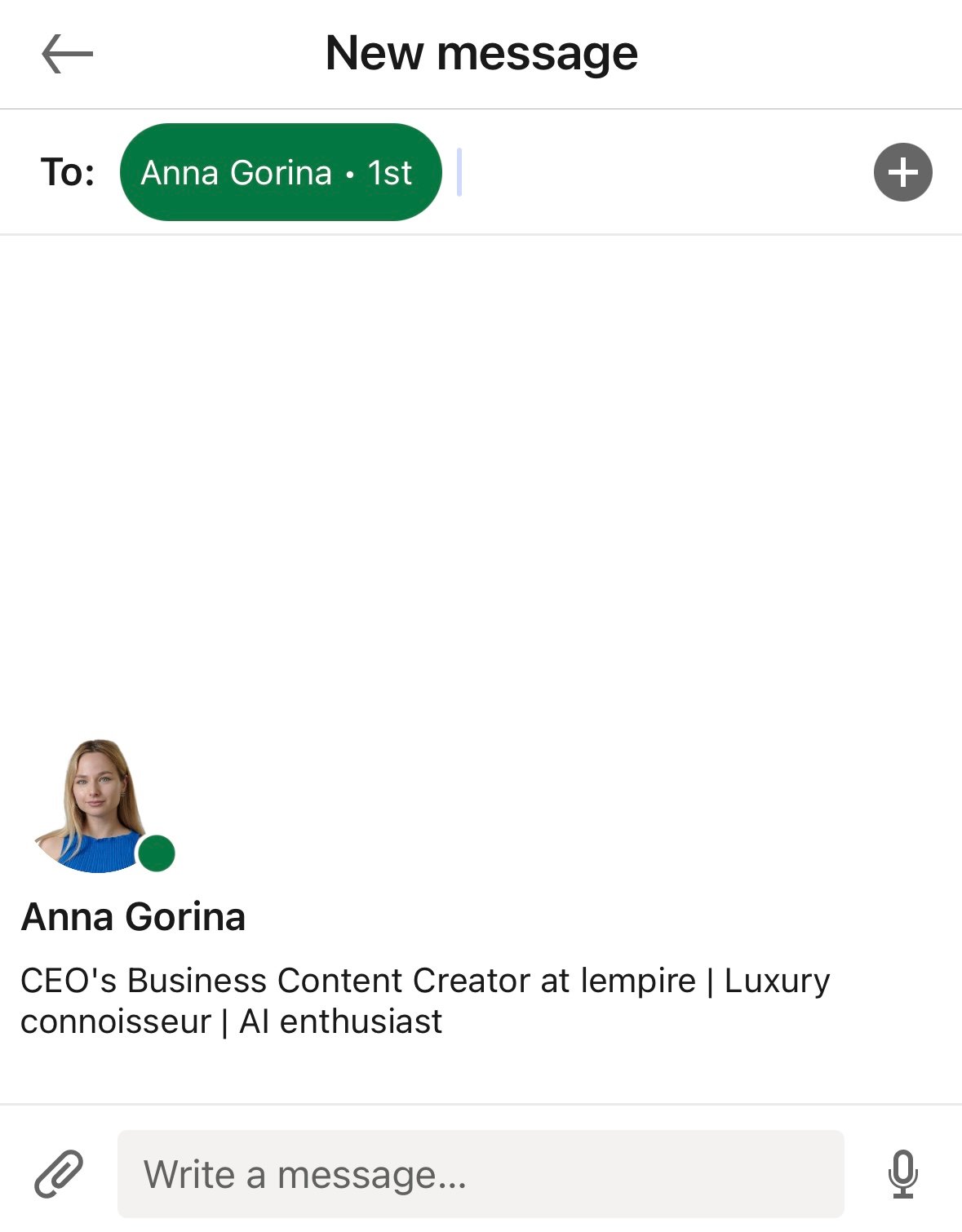
4. Tap the Voice Messaging icon
The pop-out “LinkedIn would like to Access the Microphone. We use the microphone to capture audio for audio/videos that you record” might appear. Tap “OK” or “Don’t Allow”.
To remove access to your device microphone, go to the Privacy Settings and under Microphone, move the toggle next to LinkedIn.
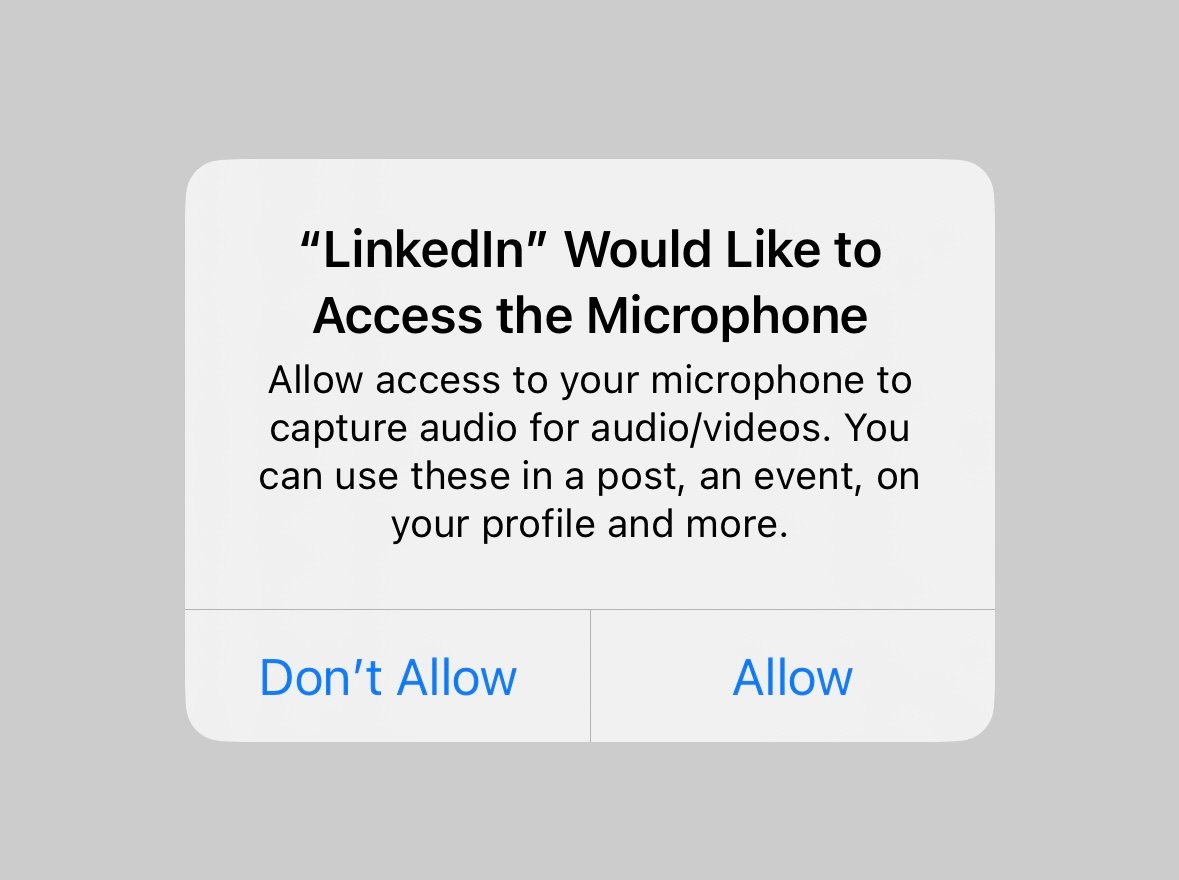
6. Hold down on the microphone image to record your message
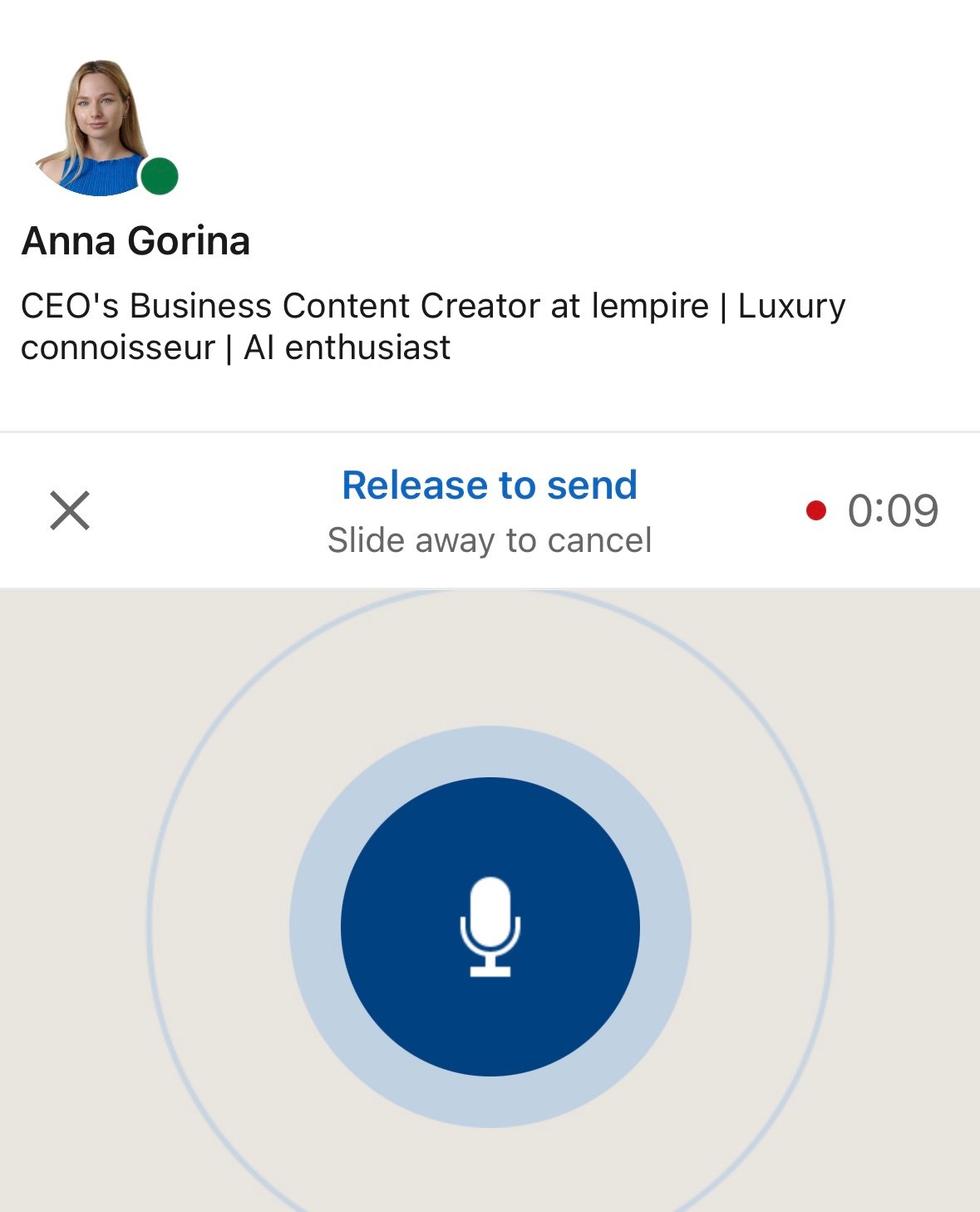
7. Release to send or slide away to cancel
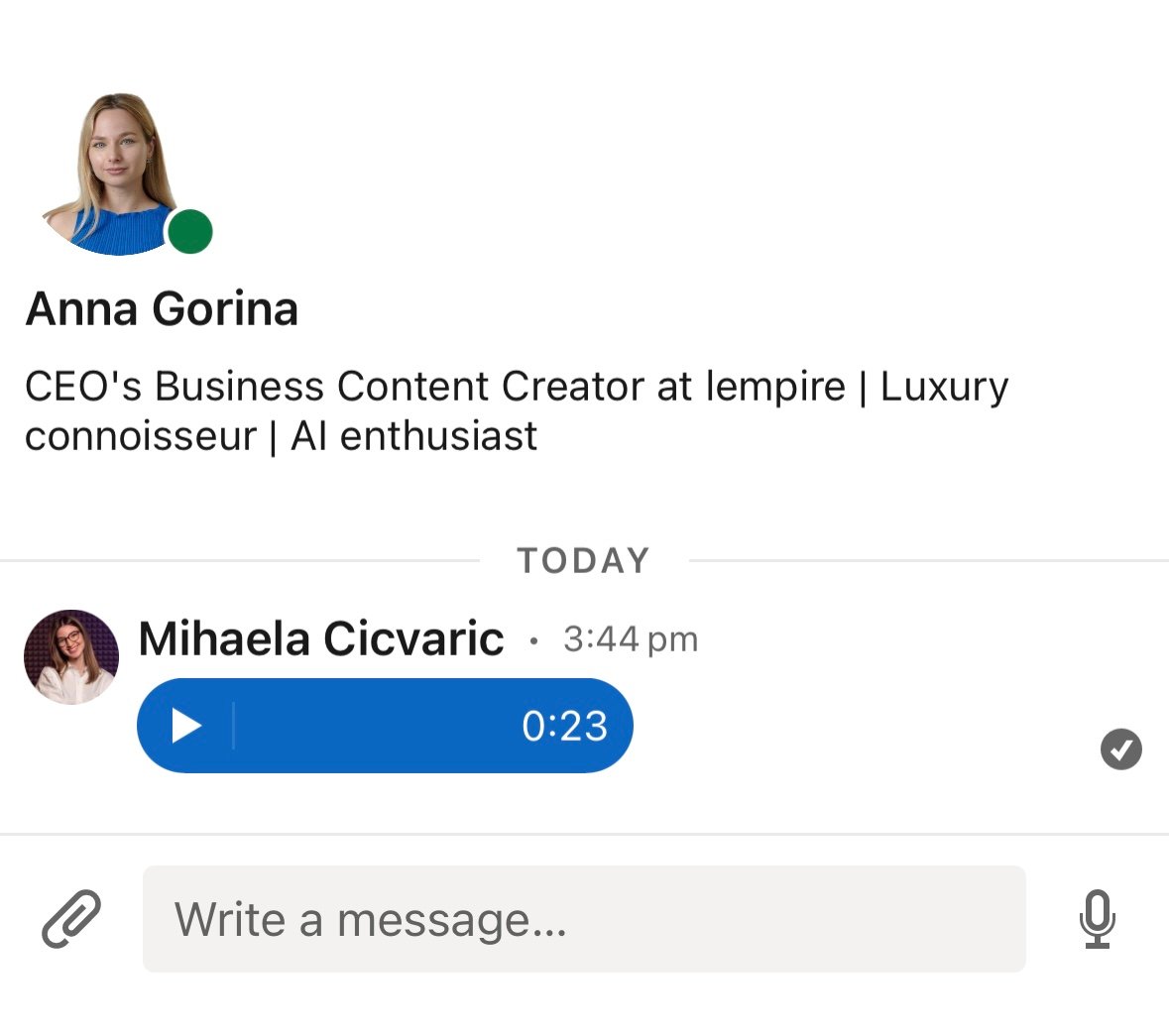
Note: Voice messages can be a maximum of one minute in length!
To access a voice message sent to you:
- Tap the Messaging icon.
- Next to the message, a Voice Message icon will appear. Tap on the message to open it.
- Tap the play button to listen to it.
But sending voice messages like this often comes with a lot of friction. You can only record and send voice messages via mobile app, so you must jump between devices.
And if you want to reach a large audience, you have to manually record and send the same message to each of your leads…
How to send LinkedIn voice messages at scale (automatically)
lemlist users can add LinkedIn voice messages to their automated outreach campaigns and connect in a human way, at scale!
1. Log into your lemlist app or create a 14-day free trial
2. Create a new multichannel sequence
3. Choose the step “Voice message” or add it in later steps of your sequence
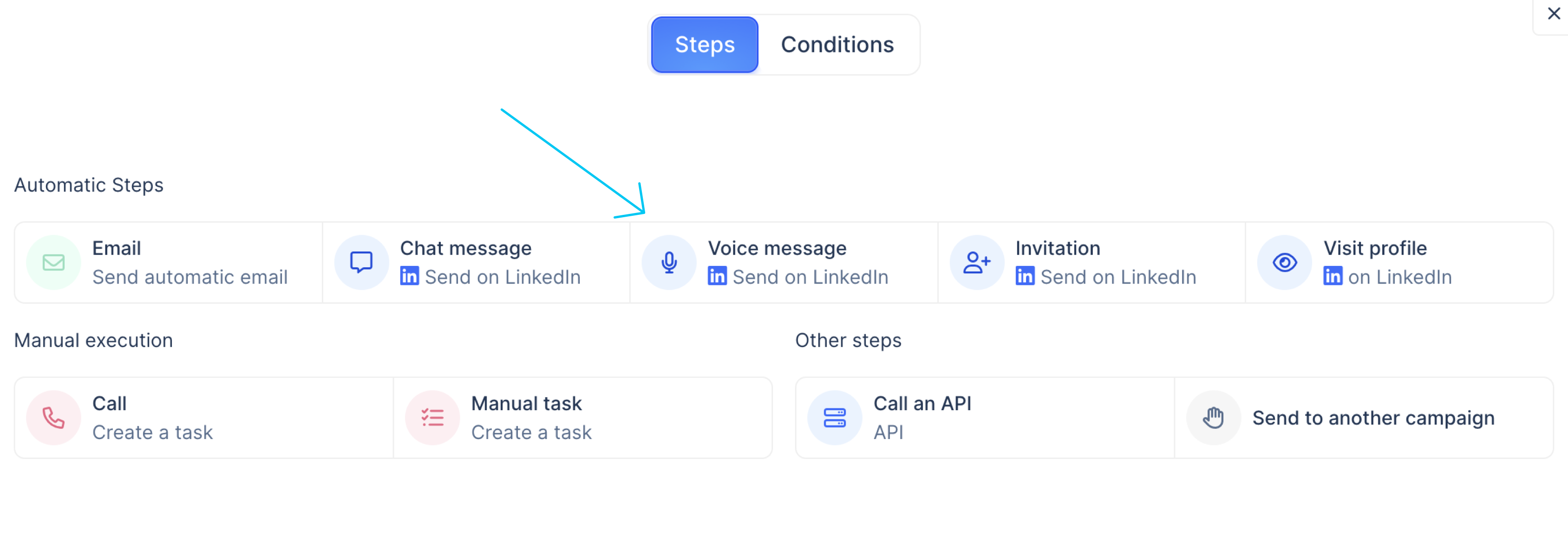
4. Record a voice message that will be sent from the chosen sender (max 1 min.)
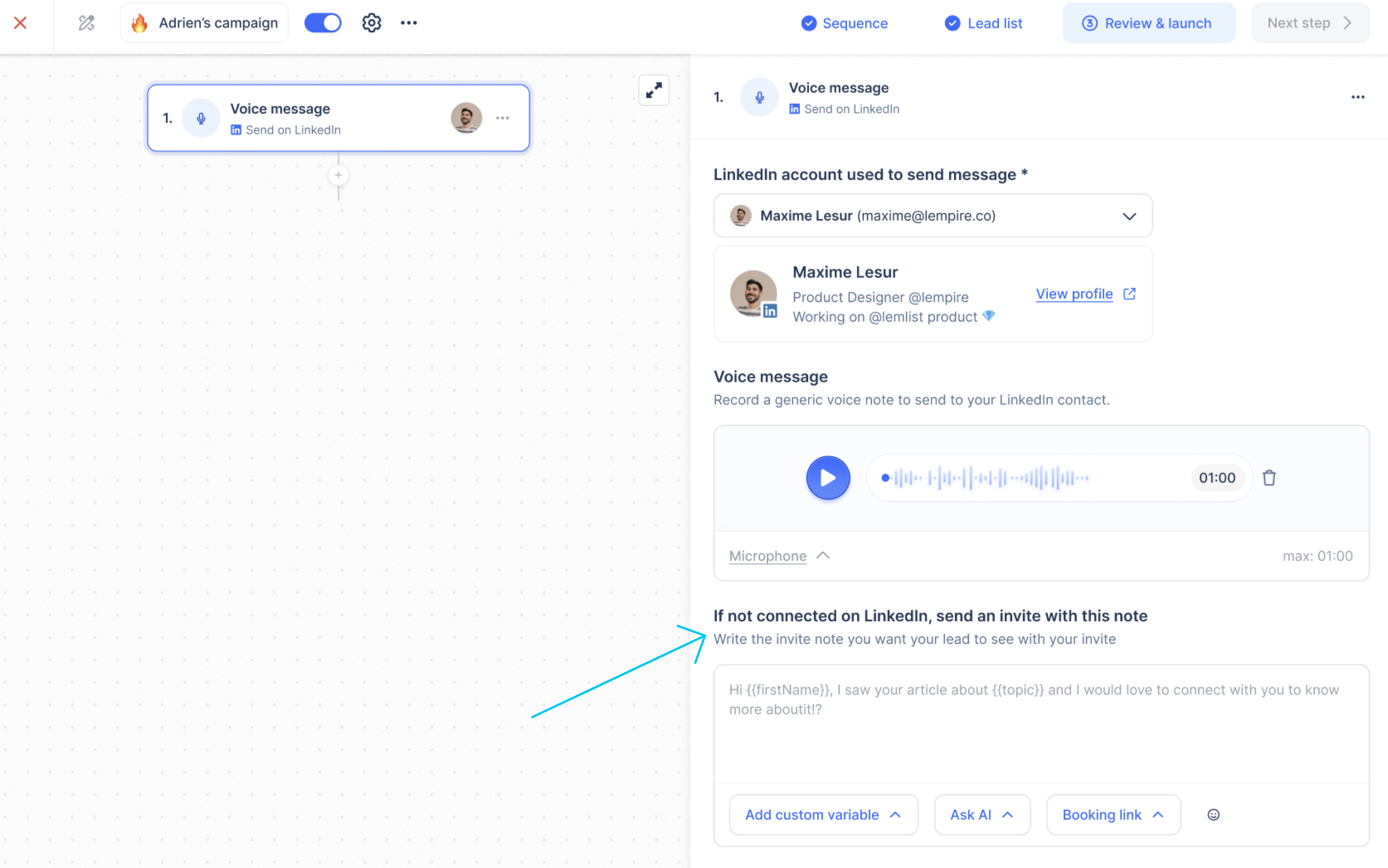
P.S. If the lead is not in your contacts, you can send an invite with an alternate message.
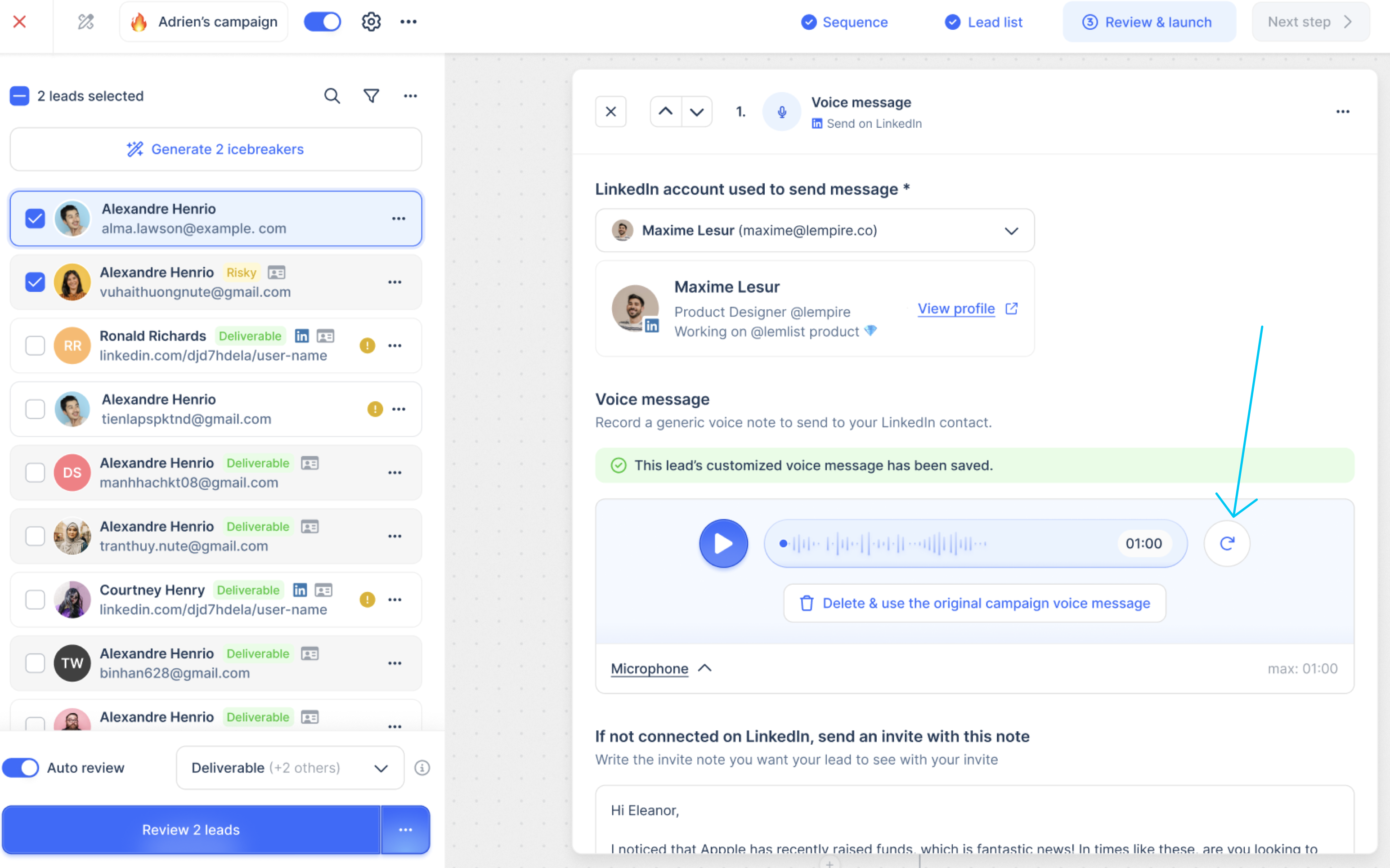
If you want to reach more customers by spreading sending volumes across different senders – send a Voice Message with a different sending account.
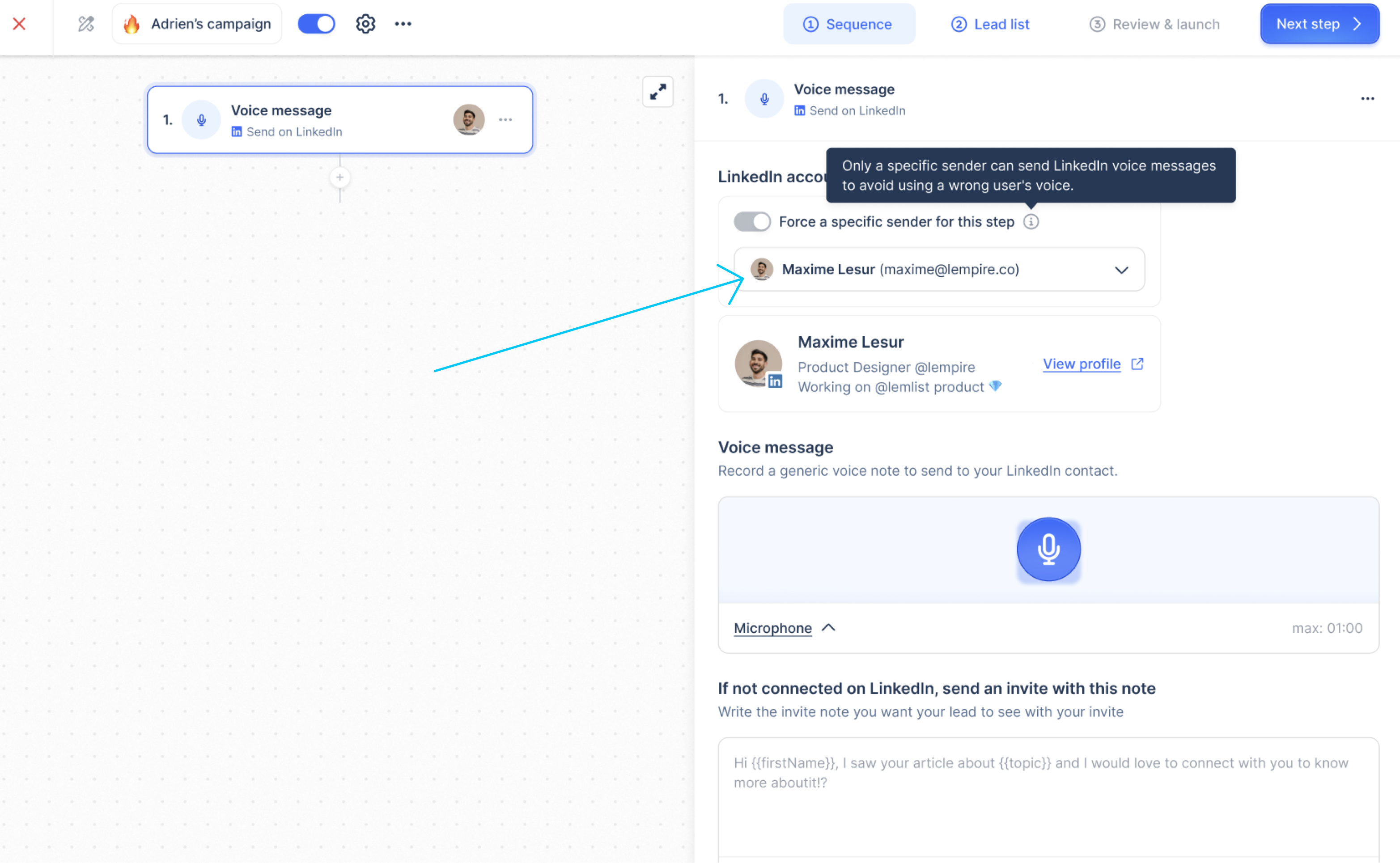
If you’re going to send a specific message for a specific lead, you can change the previously assigned message to all leads in the Review section by recording a voice message.

P.S. The same limit applies to LinkedIn Voice Messages and regular LinkedIn messages.
5. Send by reviewing all leads
6. Follow your success for each step or whole campaign
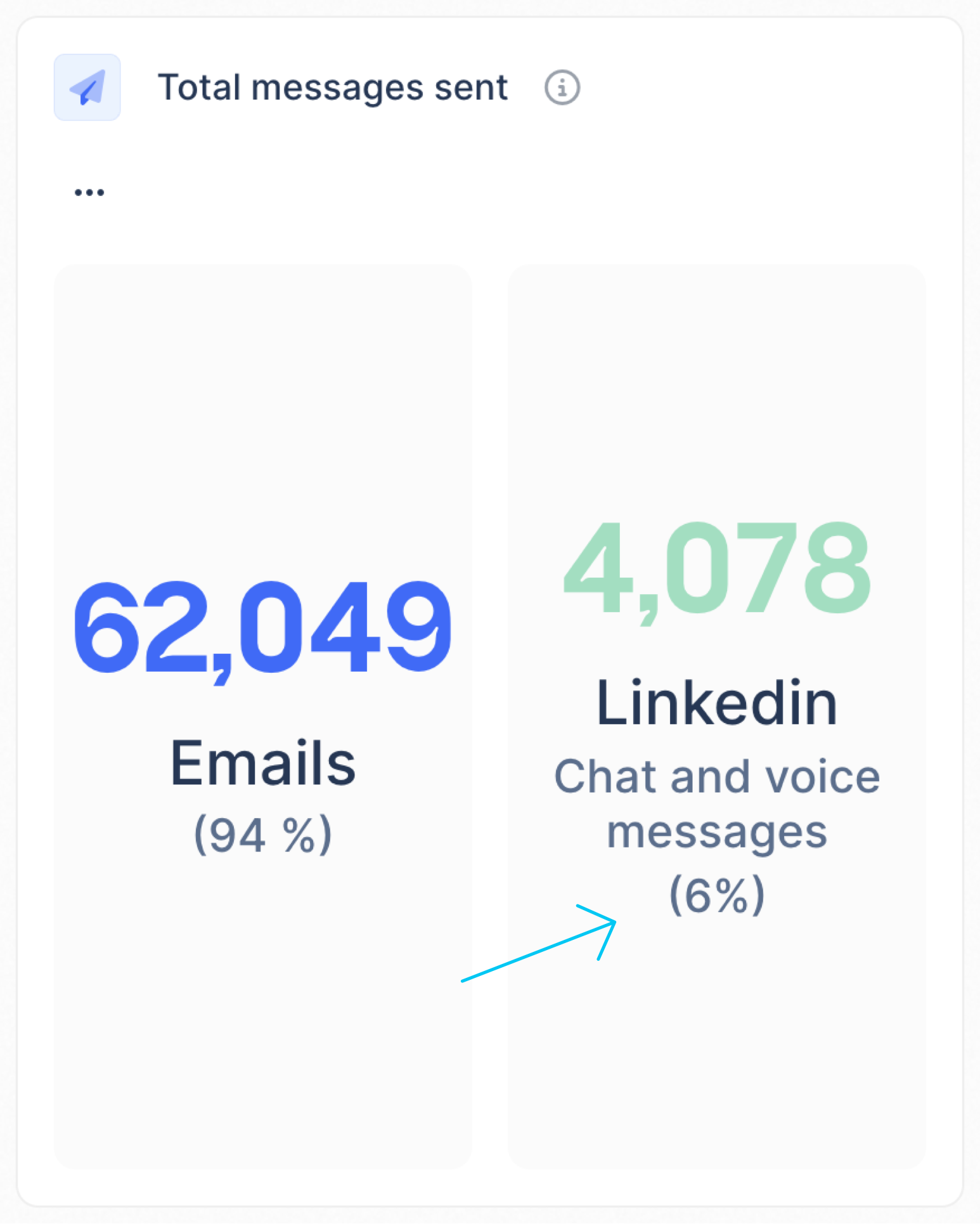
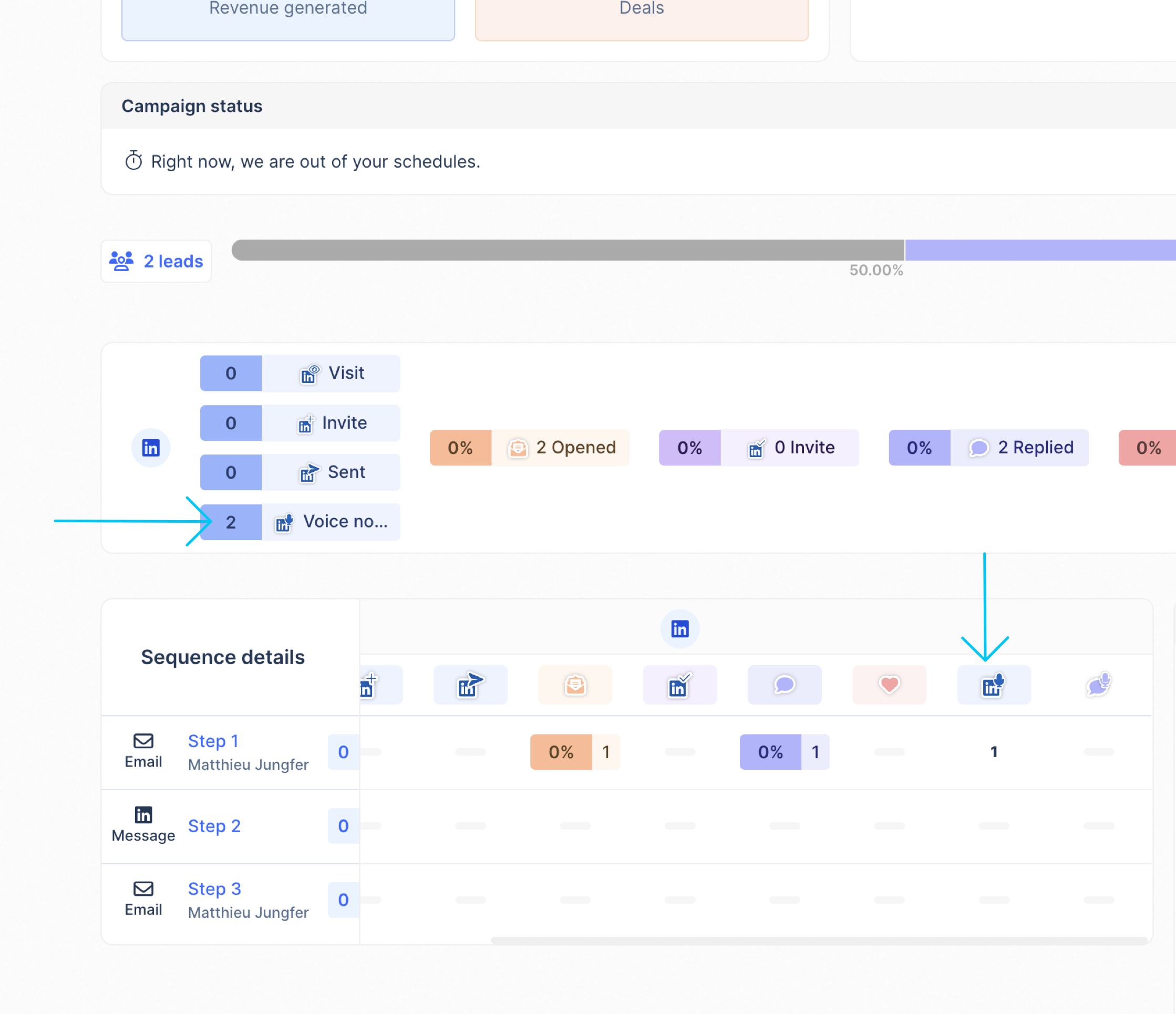
Adding lemlist’s LinkedIn voice messages to your outreach will help you:
✅ Save time as you don’t have to record the same message for each lead manually
✅ Centralize outreach efforts as you don’t have to jump between desktop and mobile app
✅ Boost replies by building a personal connection
✅ Engage at scale in a human way and stand out of the crowd
How to craft an ideal LinkedIn voice message?
To effectively record a LinkedIn voice message for cold outreach that encourages replies from prospects and boosts sales, follow these top tips:
- Do detailed background research: Understand your prospect’s background and business to ensure you’re reaching out to people who need your product/service.
- Use appropriate tone: Your tone comes through in your voice, so smile to convey warmth and come off as a friend trying to help.
- Find common ground: Reference common event, webinar, or pain point to find a common ground and break the ice.
- Give value: Give a compelling reason for them to respond by briefly outlining the value you offer.
- Pique curiosity: Give a compelling reason for them to respond by briefly outlining the value (but not disclosing it all).
- Stay Concise: Keep your message short (30 sec – 1 min) and in one piece.
- Make the following steps clear: Offer concrete instructions for further engagement if they’re interested.
If you’re looking for top LinkedIn voice messages scripts that will help you catch prospects attention and get replies, get your free copy of the LinkedIn voice message guide here.
The key takeaways
LinkedIn voice messages are a unique and effective tool for reaching prospects in a hyper-personalized way.
Incorporating the tips and tools discussed allows you to create impactful voice messages that stand out and boost your response rate.
Integrating voice messages into your LinkedIn strategy will make you stand out in sales, growth, or recruiting.
Remember, experimentation is key—don’t hesitate to launch multiple campaigns with different messages to determine what resonates best with your audience.
Your source of actionable outreach tips and strategies that will help you get replies and grow your business.

